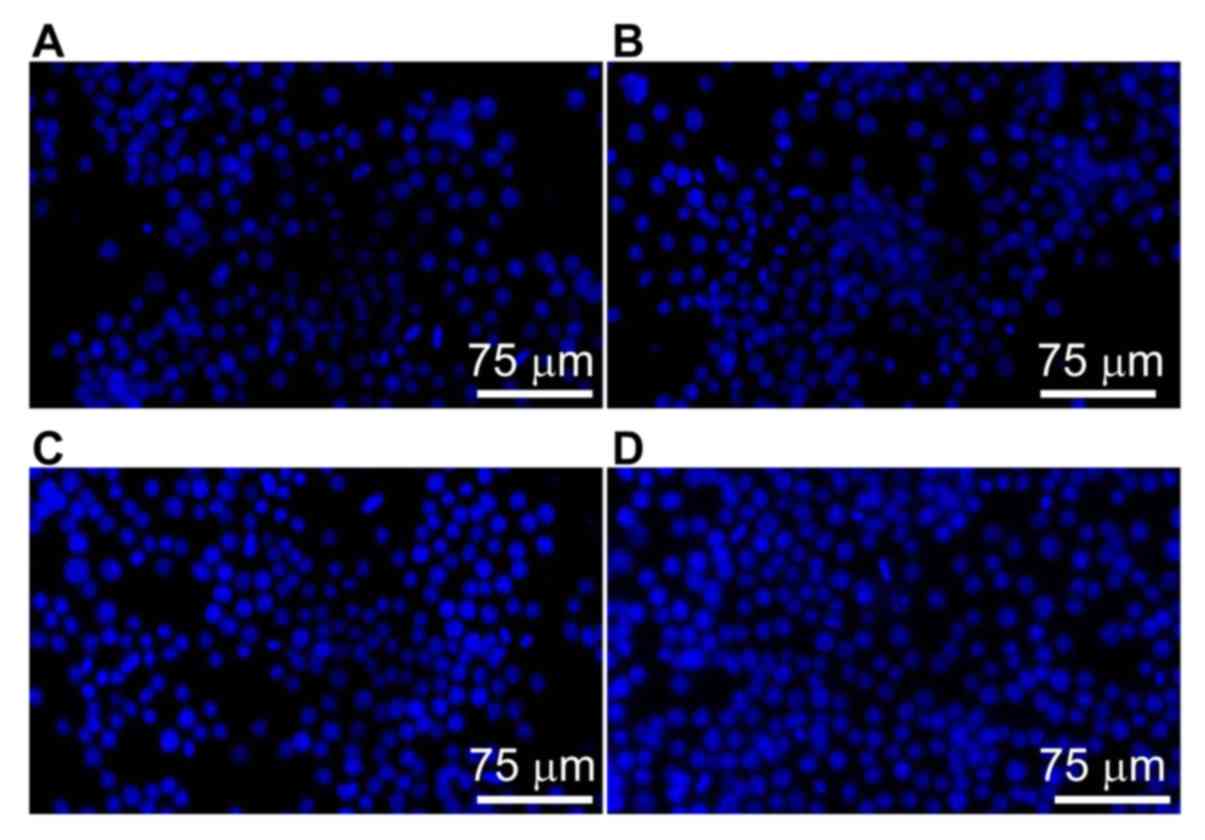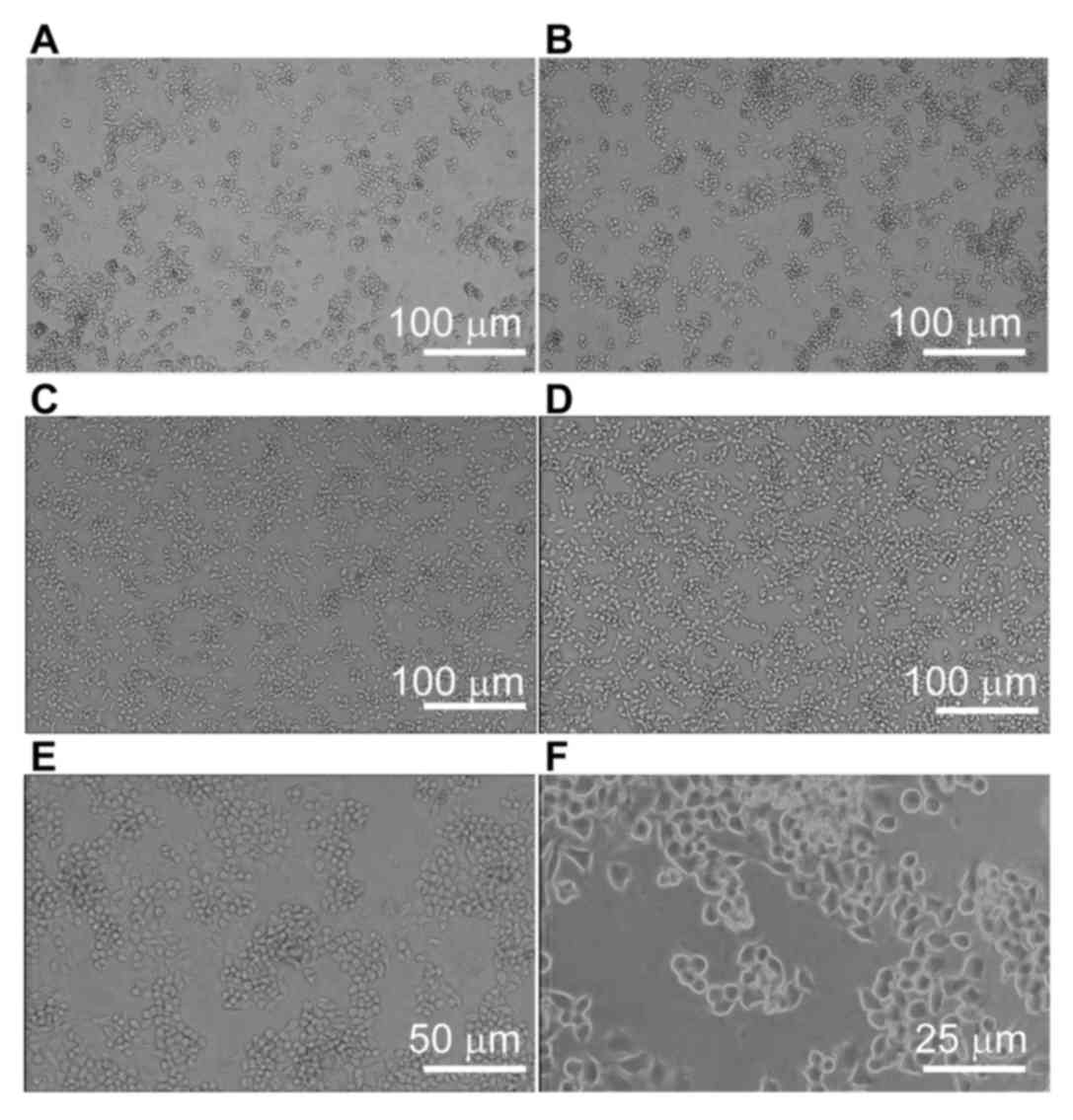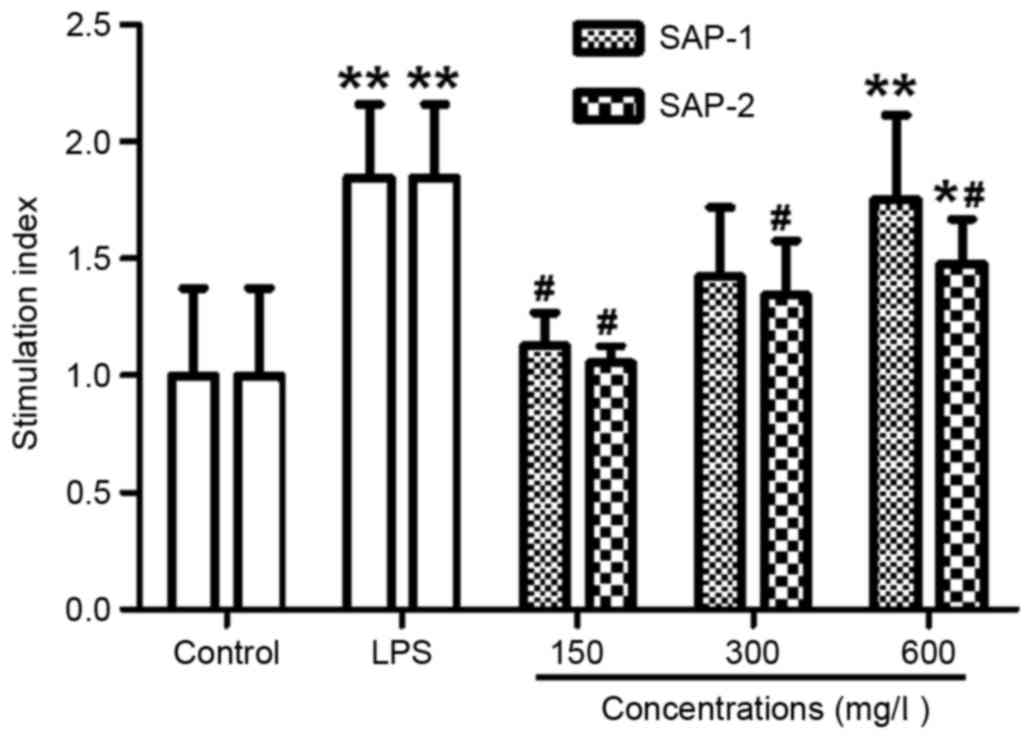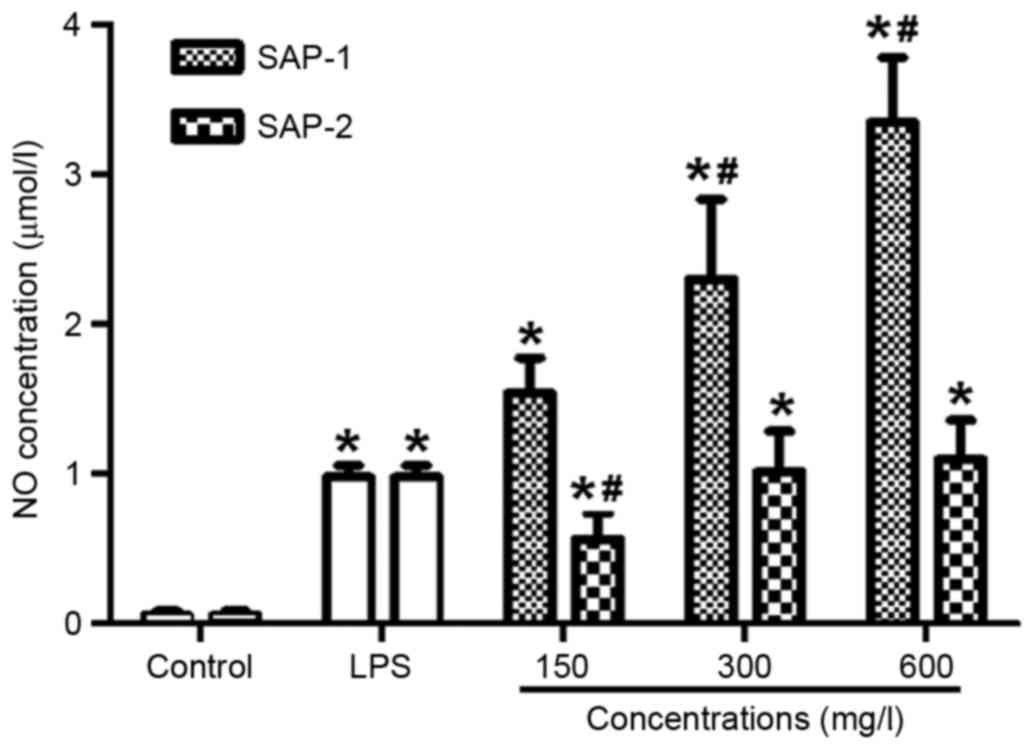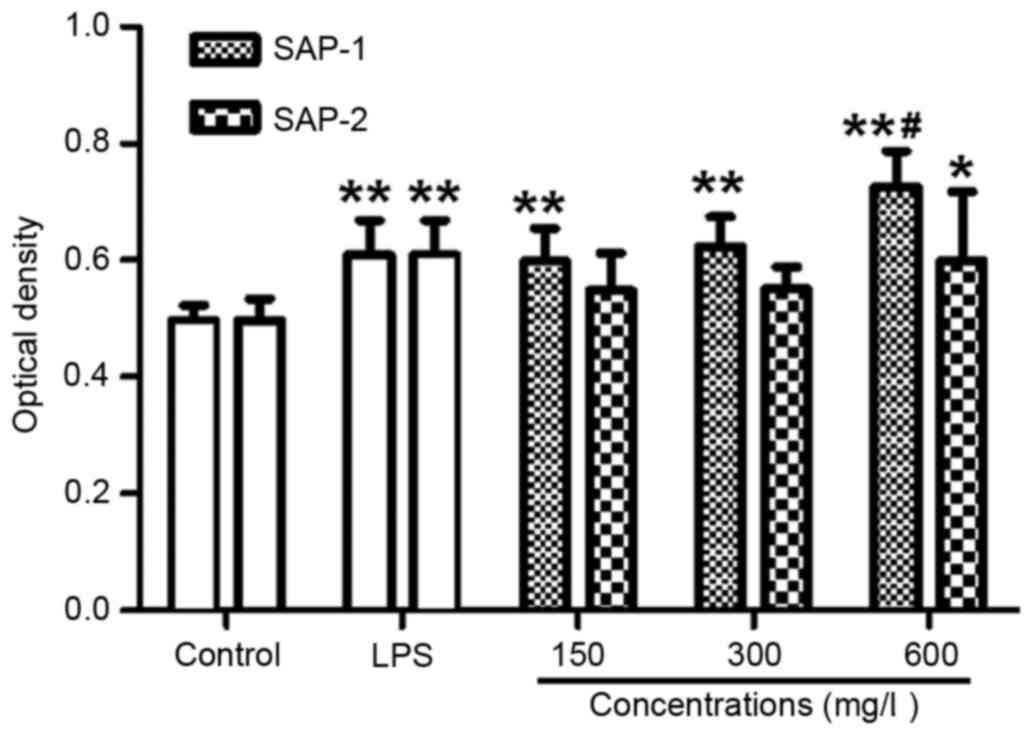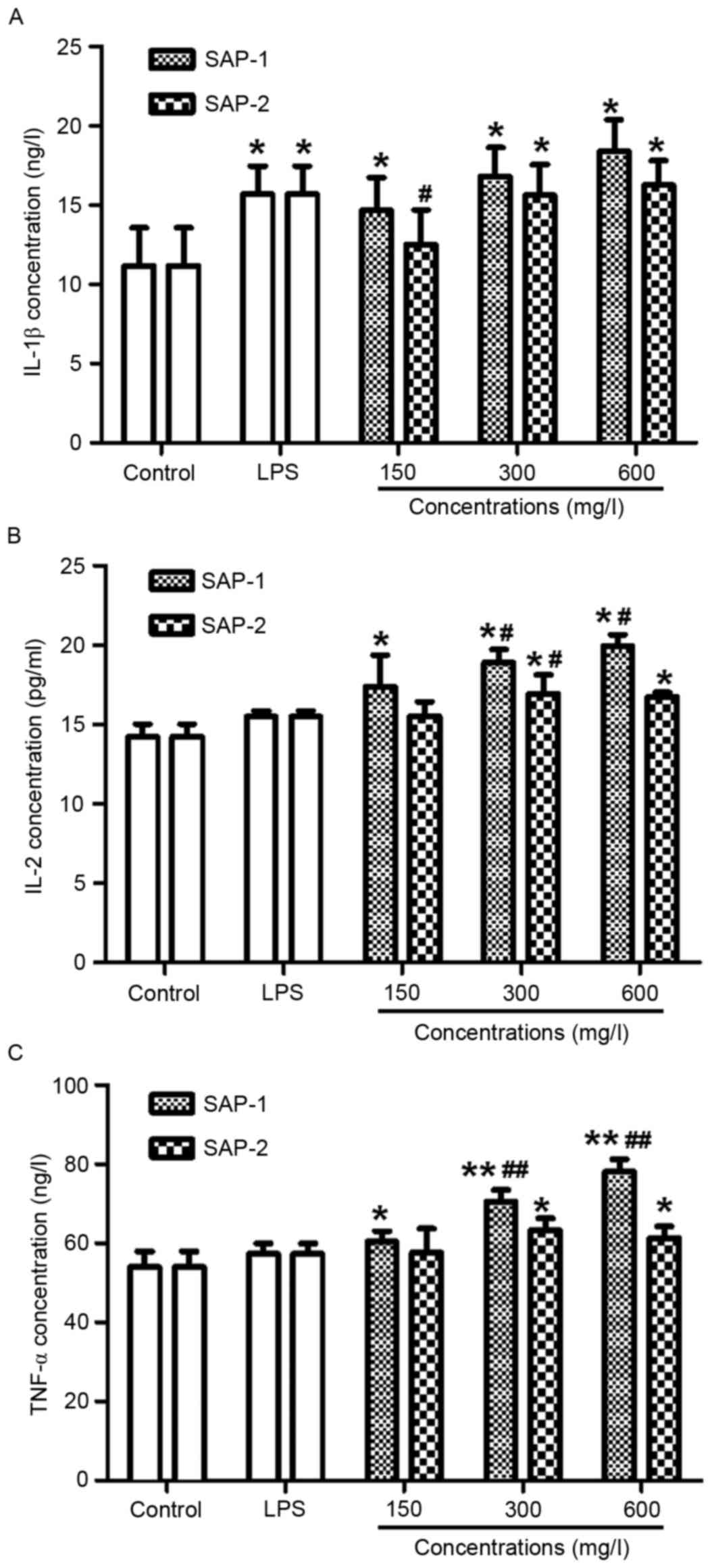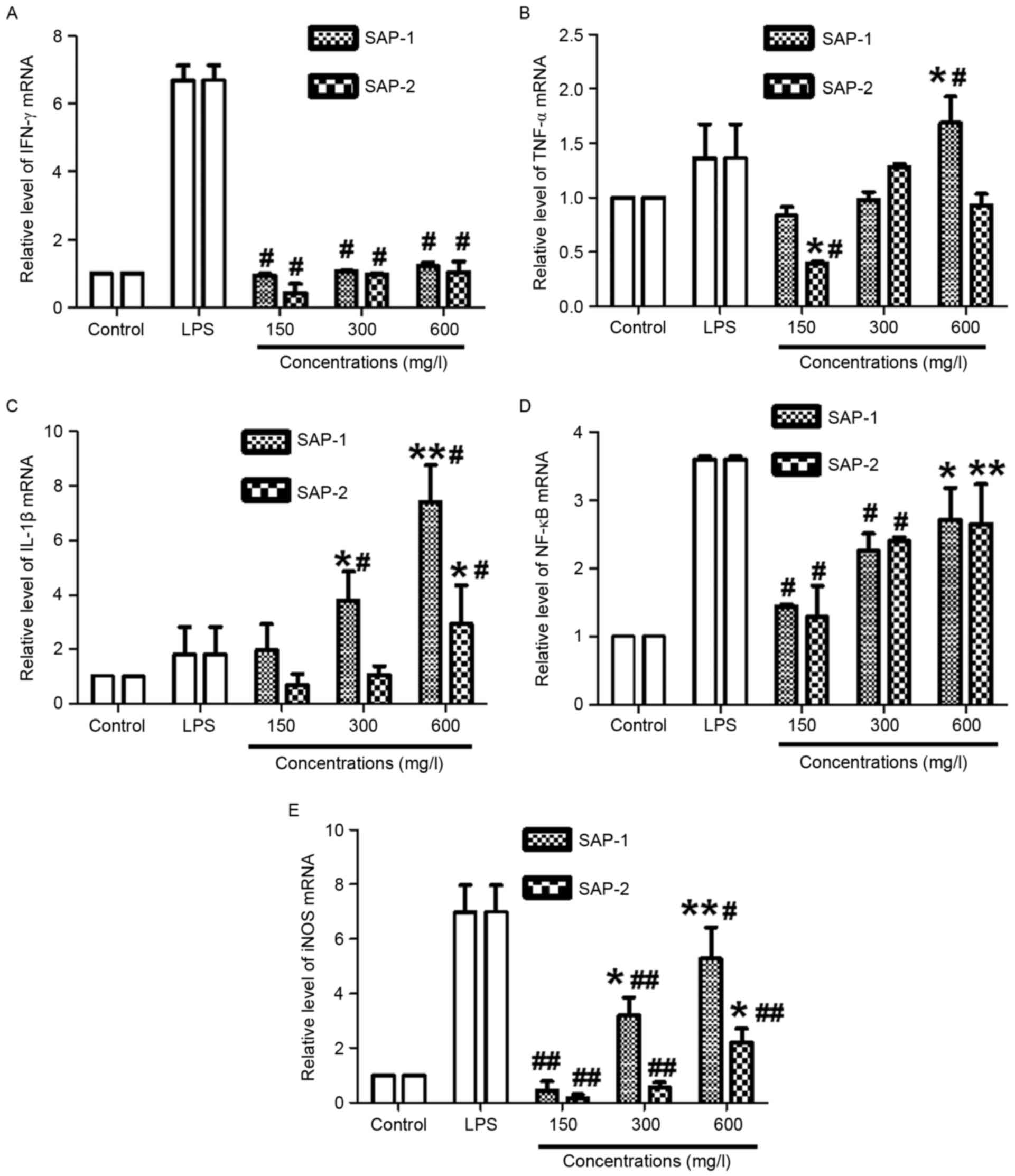|
1
|
Rukeyamu Shadike: Commonly used herbs in
Uygur medicine (Written in Uygur). Xinjiang Science and Technology
Press; Urumqi: pp. 2841993
|
|
2
|
Wu J, Li GR and Chang JM: Study on the
extraction technology of polysaccharides from Saccharum Alhagi.
Chin Traditional Patent Med. 33:9032011.(In Chinese).
|
|
3
|
Gong Y, Wu J and Li ST: Immuno-enhancement
effects of Lycium ruthenicum Murr. Polysaccharide on
cyclophamide-induced immunosuppression in mice. Int J Clin Exp Med.
8:20631–20637. 2015.PubMed/NCBI
|
|
4
|
Sun H, Zhang J, Chen F, Chen X, Zhou Z and
Wang H: Activation of RAW264.7 macrophages by the polysaccharide
from the roots of Actinidia eriantha and its molecular mechanisms.
Carbohydr Polym. 121:388–402. 2015. View Article : Google Scholar : PubMed/NCBI
|
|
5
|
Brynjolfsson SF, Henneken M, Bjarnarson
SP, Mori E, Del Giudice G and Jonsdottir I: Hyporesponsiveness
following booster immunization with bacterial polysaccharides is
caused by apoptosis of memory B cells. J Infect Dis. 205:422–430.
2012. View Article : Google Scholar : PubMed/NCBI
|
|
6
|
Yao L, Wang Z, Zhao H, Cheng C, Fu X, Liu
J and Yang X: Protective effects of polysaccharides from soybean
meal against X-ray radiation induced damage in mouse spllen
lymphocytes. Int J Mol Sci. 12:8096–8104. 2011. View Article : Google Scholar : PubMed/NCBI
|
|
7
|
Jin Y, Tachibana I, Takeda Y, He P, Kang
S, Suzuki M, Kuhara H, Tetsumoto S, Tsujino K, Minami T, et al:
Statins decrease lung inflammation in mice by upregulating
tetraspanin CD9 in macrophages. PLoS One. 8:e737062013. View Article : Google Scholar : PubMed/NCBI
|
|
8
|
Wu M, Luo X, Xu X, Wei W, Yu M, Jiang N,
Ye L, Yang Z and Fei X: Antioxidant and immunomodulatory activities
of a polysaccharide from Flammulina velutipes. J Tradit Chin Med.
34:733–740. 2014. View Article : Google Scholar : PubMed/NCBI
|
|
9
|
Zhao J, Li GR and Zheng J: Screening of
polysaccharides with antioxidant activities from Saccharum Alhagi.
J Xinjiang Med Univ. 38:1479–1481. 2015.(In Chinese).
|
|
10
|
Han Z, He J and Chang J: The influence of
polysaccharides from Saccharum Alhagi on the immune activity of
macrophage cell line RAW264.7. J Xinjiang Med Univ. 40:361–365.
2017.(In Chinese).
|
|
11
|
Jian L, Li G and Chang J: Determination of
monosaccharide composition in polysaccharide of alhagi-honey by
pre-column derivatization-high performance capillary
electrophoresis. Chin J N Drugs. 21:78–81. 2012.
|
|
12
|
Su KY, Yu CY, Chen YP, Hua KF and Chen YL:
3,4-dihydroxytoluene, a metabolite of rutin, inhibits inflammatory
responses in lipopolysaccharide-activated macrophages by reducing
the activation of NF-κB signaling. BMC Complement Altern Med.
14:212014. View Article : Google Scholar : PubMed/NCBI
|
|
13
|
Kim KS, Cui X, Lee DS, Sohn JH, Yim JH,
Kim YC and Oh H: Anti-inflammatory effect of neoechinulin a from
the marine fungus Eurotium sp.SF-5989 through the Suppression of
NF-кB and p38 MAPK pathways in lipopolysaccharide stimulated
RAW264.7 macrophages. Molecules. 18:13245–13259. 2013. View Article : Google Scholar : PubMed/NCBI
|
|
14
|
Etoh T, Kim YP, Ohsaki A, Komiyama K and
Hayashi M: Inhibitory effect of erythraline on Toll-like receptor
signaling pathway in RAW264.7 cells. Biol Pharm Bull. 36:1363–1369.
2013. View Article : Google Scholar : PubMed/NCBI
|
|
15
|
Gao Y, Liu F, Fang L, Cai R, Zong C and Qi
Y: Genkwanin inhibits proinflammatory mediators mainly through the
regulation of miR-101/MKP-1/MAPK pathway in LPS-activated
macrophages. PLoS One. 9:e967412014. View Article : Google Scholar : PubMed/NCBI
|
|
16
|
Zhao Q, Qian Y, Li R, Tan B, Han H, Liu M,
Qian M and Du B: Norcantharidin facilitates LPS-mediated immune
responses by up-regulation of AKT/NF-kB signaling in macrophages.
PLoS One. 7:e449562012. View Article : Google Scholar : PubMed/NCBI
|
|
17
|
Chen JL, Zhong WJ, Tang GH, Li J, Zhao ZM,
Yang DP and Jiang L: Norditerpenoids from Flickingeria fimbriata
and their inhibitory activities on nitric oxide and tumor necrosis
factor-α production in mouse macrophages. Molecules. 19:5863–5875.
2014. View Article : Google Scholar : PubMed/NCBI
|
|
18
|
O'Mahony C, Scully P, O'Mahony D, Murphy
S, O'Brien F, Lyons A, Sherlock G, MacSharry J, Kiely B, Shanahan F
and O'Mahony L: Commensal-induced regulatory T cells mediate
protection against pathogen-stimulated NF-kappaB activation. PLoS
Pathog. 4:e10001122008. View Article : Google Scholar : PubMed/NCBI
|
|
19
|
Nishitani Y, Zhang L, Yoshida M, Azuma T,
Kanazawa K, Hashimoto T and Mizuno M: Intestinal anti-inflammatory
activity of lentinan: Influence on IL-8 and TNFR1 expression in
intestinal epithelial cells. PLoS One. 8:e624412013. View Article : Google Scholar : PubMed/NCBI
|
|
20
|
Poormasjedi-Meibod MS, Jalili RB,
Hosseini-Tabatabaei A, Hartwell R and Ghahary A: Immuno-regulatory
function of indoleamine 2,3 dioxygenase through modulation of
innate immune responses. PLoS One. 8:e710442013. View Article : Google Scholar : PubMed/NCBI
|
|
21
|
Ohnishi T, Bandow K, Kakimoto K, Kusuyama
J and Matsuguchi T: Long-Time treatment by low-dose
N-Acetyl-L-Cysteine enhances proinflammatory cytokine expressions
in LPS-stimulated macrophages. PLoS One. 9:e872292014. View Article : Google Scholar : PubMed/NCBI
|
|
22
|
Livak KJ and Schmittgen TD: Analysis of
relative gene expression data using real-time quantitative PCR and
the 2(-Delta Delta C(T)) method. Methods. 25:402–408. 2001.
View Article : Google Scholar : PubMed/NCBI
|
|
23
|
Liang Z, Zeng Y, Huang X and Yang Z: The
effect of Apigenin on proliferation and No secretion and
phagocytosis of RAW264.7 cells. J Jinan Univ (Natural Sci).
29:95–98. 2008.(In Chinese).
|
|
24
|
Xie Y, Chen Q, Luo D and Zhong Z:
Anti-fatigue and immunoregulatory functions of high-purity
rubusoside. Lishizhen Med Materia Med Res. 21:1421–1422. 2010.(In
Chinese).
|
|
25
|
Huang F, Guo Y, Zhang R, Yi Y, Deng Y, Su
D and Zhang M: Effects of drying methods on physicochemical and
immunomodulatory properties of polysaccharide-protein complexes
from litchi pulp. Molecules. 19:12760–12776. 2014. View Article : Google Scholar : PubMed/NCBI
|
|
26
|
Luo J, Zhu R, Yi L Dong Y and Wang PX:
Effect of sinomenine on mouse RAW264.7 macrophage cells line
polarization induced by LPS or IL-4. Chin J Immunol. 31:56–60.
2015.
|
|
27
|
Byeon SE, Lee J, Kim JH, Yang WS, Kwak YS,
Kim SY, Choung ES, Rhee MH and Cho JY: Molecular mechanism of
macrophage activation by red ginseng acidic polysaccharide from
Korean red ginseng. Mediators Inflamm. 2012:1–7. 2012. View Article : Google Scholar
|



